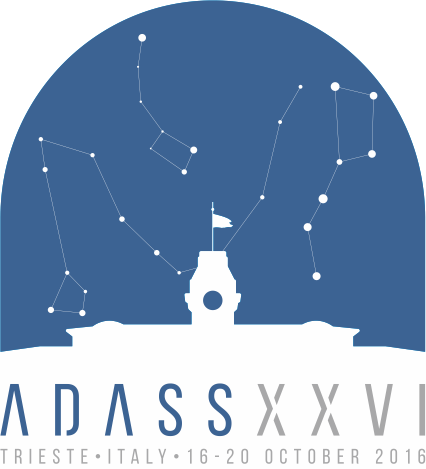Ayling Elliott
Contact
- Position:
- School of Creative Technologies, University of Portsmouth
- Address
- United Kingdom
Miscellaneous Information
- Miscellaneous Information
-
Abstract Reference: 30079
Identifier: P3.2
Presentation: Poster presentation
Key Theme: 3 New Trends in HPC and Distributed Computing
Accelerated Distributed Visualisation in The Theoretical Astrophysical Observatory (TAO)Authors:
Ayling Elliott, Hassan Amr, Dykes Tim, Christopher Fluke, Gheller Claudio, Krokos MelMock observations of galaxy survey data are an integral part of modern astronomical analysis. Their creation demands expert knowledge of galaxy modelling and simulation, as well as access to high performance computing (HPC). Consequently, it is a non trivial task for observers to quickly build mock catalogues suited to their needs. The Theoretical Astrophysical Observatory (TAO) is a virtual laboratory that provides a pipeline to build such mock observations and other derived data products based on different cosmological dark matter simulations and semi-analytic galaxy formation models. TAO intuitive interface hides the complexity of its distributed back-end and provides an easy-to-use mechanism to control its processing pipelines. Bringing analysis and post-processing codes to the data is the preferred solution for cutting edge big-data problems in astronomy. Such a solution is not easy to achieve - especially on modern massively parallel heterogeneous architectures. The majority of astronomers often have little or no knowledge on how to build complex large-scale data analysis pipelines or interact with such platforms. Our paper describes recent work towards web-based interactive visual exploration of large datasets in TAO to underpin better exploitation of its high-performance data analysis and processing pipelines. This work fully integrates the high performance volume rendering technique, Splotch, within the standard TAO pipeline. Splotch is a ray-casting approach for visualizing complex and multivariate large-scale point clouds and is in continuous development, taking into account emerging technologies (e.g. GPUs, Xeon Phi) and HPC solutions (e.g. massively parallel and heterogeneous architectures). Through a smart combination of CUDA, OpenMP and MPI, as well as GPI, Splotch is highly scalable and capable of processing hundreds of TBs whilst keeping computational times at acceptable levels. We outline how Splotch was adapted to accommodate specific TAO requirements as a means of visual exploration and discovery for quickly gaining an understanding of large datasets by end users, thus facilitating effective selection of TAO content for further quantitative analysis. We discuss work to expose functionalities through a web interface based on Django giving non technical TAO users the possibility to deploy Splotch in an HPC environment for easy access to state-of-the-art simulated data for a wider user base of astronomers.



